Discover the 10 Strongest Bite Forces of Animals Found in Canada
As one of the world’s largest countries — in terms of land mass — it is no surprise that Canada has a variety of wildlife existing within it. While Canada has some peaceful animals like the snowshoe hare and Canadian goose, others may pack more punch. These animals are creatures that you do not want to get bitten by. Here are the ten strongest bite forces of animals found in Canada.
10 Strongest Bite Forces of Animals Found in Canada
Below is a list of the ten strongest bite forces of animals found in Canada. Some of these animals even make it on the list of the strongest bite forces in the world. This list is ranked from lowest to highest bite force in terms of PSI.
10. Coyote (Canis latrans)
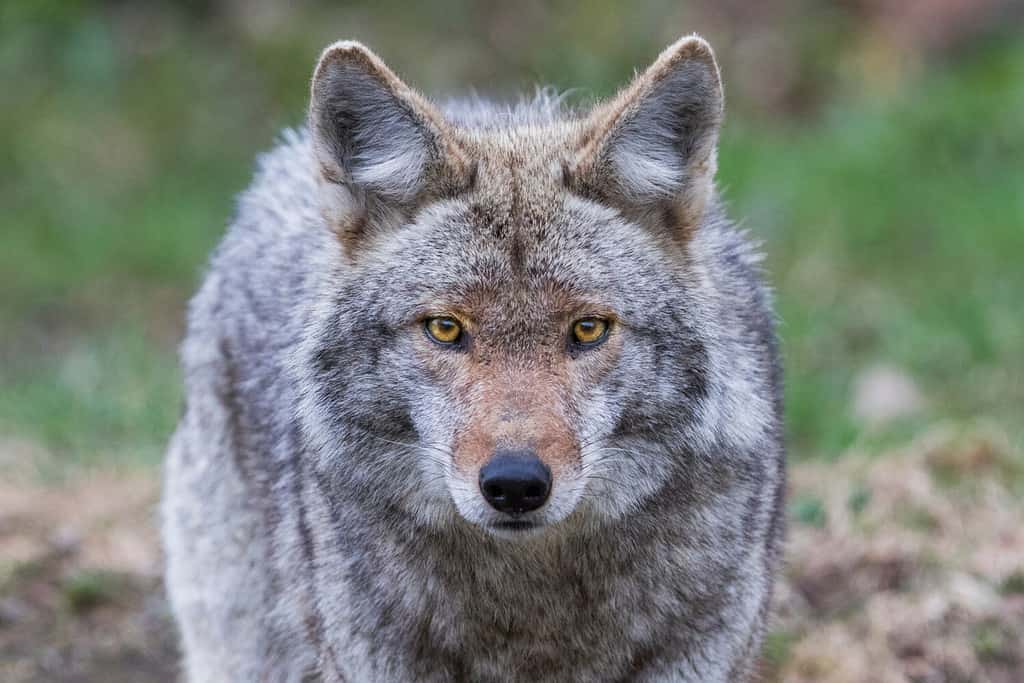
©Mircea Costina/Shutterstock.com
Bite force: 88 PSI
Size: 37 inches long
Weight: 20-50 pounds
The coyote resembles both wolves and dogs in its appearance. They inhabit a variety of areas ranging from grasslands to urban areas. Coyotes prefer to hunt live prey, and their diet mainly consists of small mammals such as rabbits and squirrels. Their smaller size allows them to run after their prey quickly, and their bite force and sharp teeth allow them to tear into their prey easily.
9. Beaver (Castor canadensis)
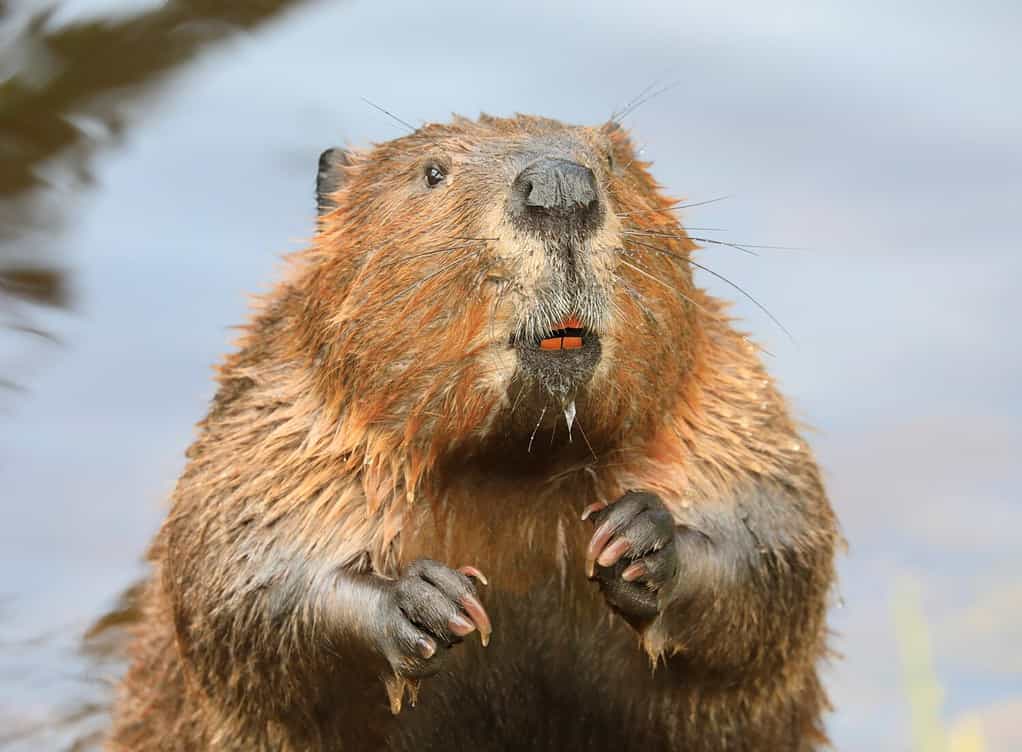
©Vlad G/Shutterstock.com
Bite force: 180 PSI
Size: 39 inches long (plus another 11 inches for their tail)
Weight: 70 pounds
While the beaver may not be an apex predator like the coyote, its lifestyle does require that it has a powerful bite force. Beavers build domes and dams to create their perfect homes. A beaver will cut down up to 300 trees a year! The beaver relies heavily on its teeth and bite force to cut down the trees, build their home, and consume their diet of bark, leaves, twigs, and aquatic vegetation.
8. Gray Wolf
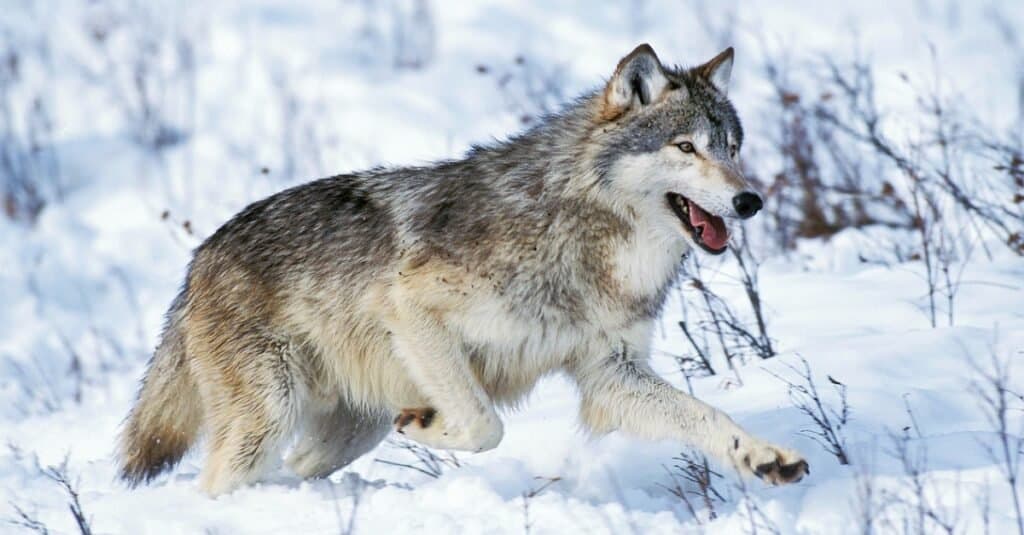
©iStock.com/slowmotiongli
Bite force: 400 PSI
Size: 4.5-6.5 feet long
Weight: 70-150 pounds
The next animal with the strongest bite force of animals in Canada is the gray wolf. Although both animals belong to the family Canidae, their bite forces differ. The gray wolf is larger and heavier than the coyote. Additionally, its bite force is stronger. The gray wolf has bigger prey, such as deer, elk, and bison, so a stronger bite force is needed to take down these large hoofed animals successfully.
7. Cougar (Felis Concolor)
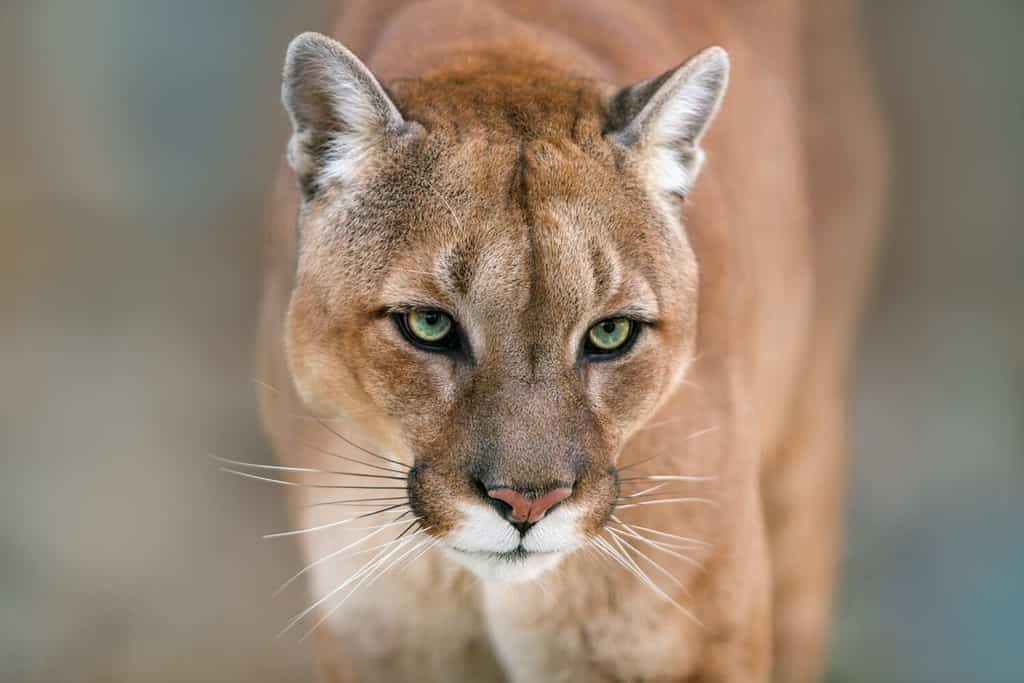
©Kwadrat/Shutterstock.com
Bite force: 400 PSI
Size: 5-9 feet long
Weight: 64-198 pounds
The cougar is North America’s second-largest cat and rightfully earns its spot among the most dangerous animals in Canada. With the ability to reach up to 50 mph and jump 20 feet in the air, they are a formidable predator. Its razor-sharp teeth are perfect for puncturing and piercing through its prey, while its strong bite allows it to hold on and easily chew through its catch. Cougars have a varied diet depending on their habitat. Some examples of their prey include beavers, raccoons, and crocodiles.
6. Canadian Lynx (Lynx canadensis)
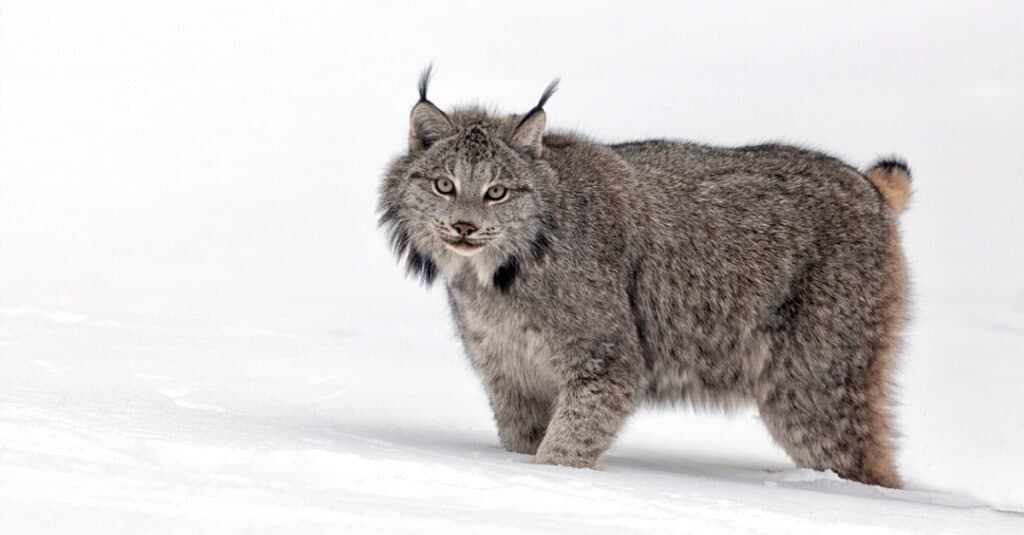
©iStock.com/Lynn_Bystrom
Bite force: 636 PSI
Size: 1.7-3.9 feet long
Weight: 20 pounds
Although smaller than the cougar, the Canadian lynx has a stronger bite force. With a bite force of 636 PSI, this medium-sized cat has no problem catching prey. Its main prey is snow hares. In addition to their powerful bite force, they also possess uniquely shaped paws that act as snowshoes, allowing them to move through the snow easily. They also have special hairs in their ears to help them hear their prey.
5. Black Bear (Ursus americanus)
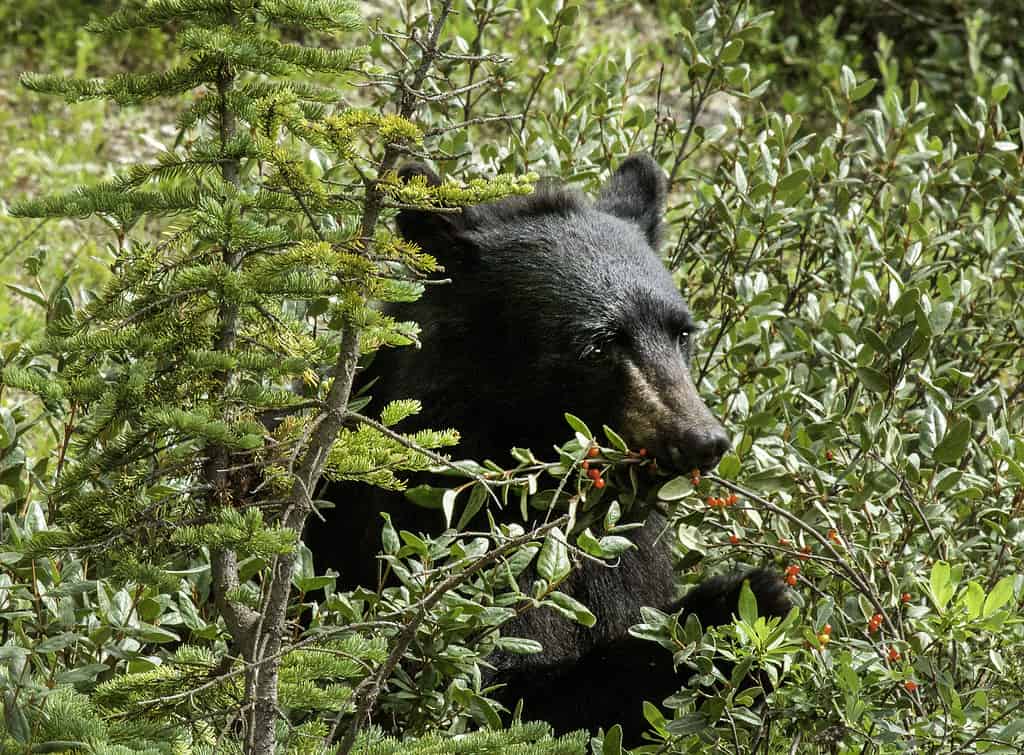
©millermountainman/ via Getty Images
Bite force: 800 PSI
Size: 4.25-6.5 feet long
Weight: 220-594 pounds
Black bears have a bite force of 800 PSI. While it is not the strongest bite force of all the bears, it can still do considerable damage. Their prey includes deer, carrion, and fish. Despite being a carnivore, this bear consumes a lot of plant material. Between 75% and 95% of their diet is vegetarian, so their bite force is strong enough for their diet and lifestyle.
4. Grizzly Bear (Ursus arctos horriblis)
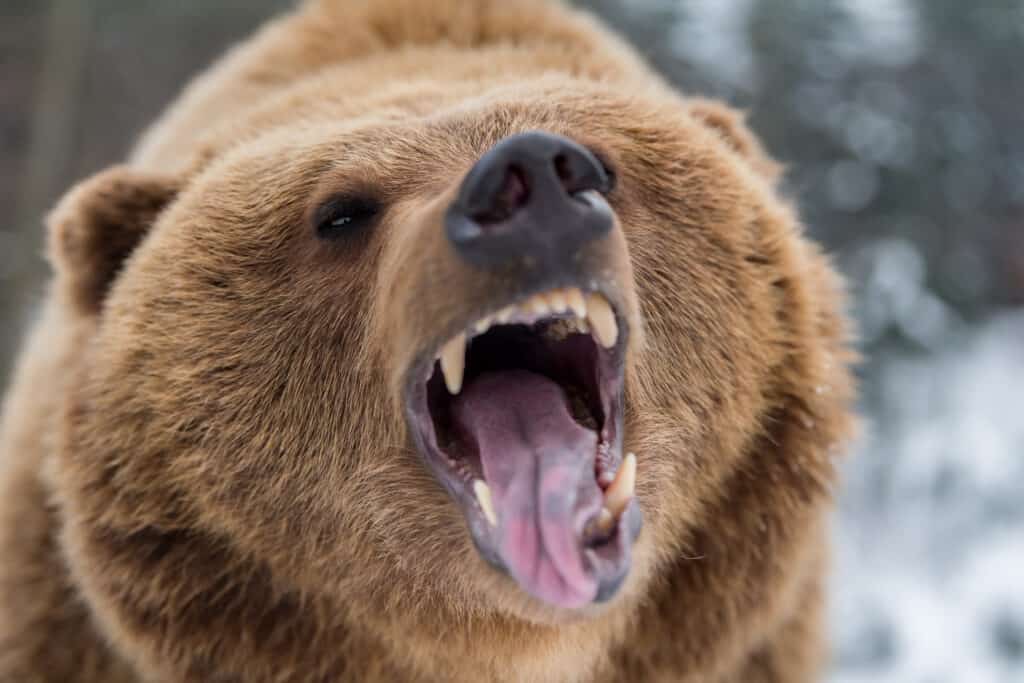
©Volodymyr Burdiak/Shutterstock.com
Bite force: 974 PSI
Size: 7-10 feet long
Weight: 400-800 pounds
Grizzly bears are larger and have a stronger bite force than black bears. While the black bear only has a bite force of 800 PSI, the grizzly bear’s bite force comes in at 974 PSI. Similar to the black bear, the grizzly bear is an omnivore. However, the grizzly bear has larger prey, such as deer and elk. They need the stronger bite force to take down the larger animals. Their strong bite force is just one of the reasons that they are considered one of the scariest animals in Canada.
3. Polar Bear (Ursus maritimus)
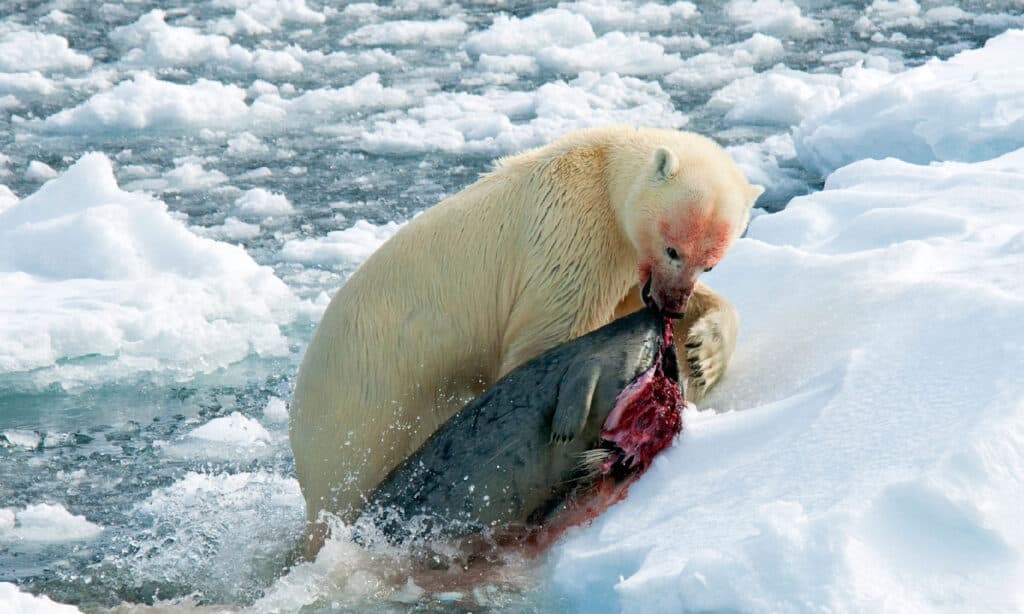
©iStock.com/AGAMI stock
Bite force: 1,200 PSI
Size: 6.5-8.3 feet long
Weight: 330-1,322 pounds
Reaching up to 1,322 pounds with a bite force of 1,200 PSI, it is no wonder the polar bear ranks third in the strongest bite forces of animals in Canada. The polar bear is considered the largest carnivorous land mammal and often feeds on seals, reindeer, and even walruses. With their massive size, 42 deadly teeth, and impressive bite force, the polar bear is an apex predator.
2. Walrus (Odobenus rosmarus)
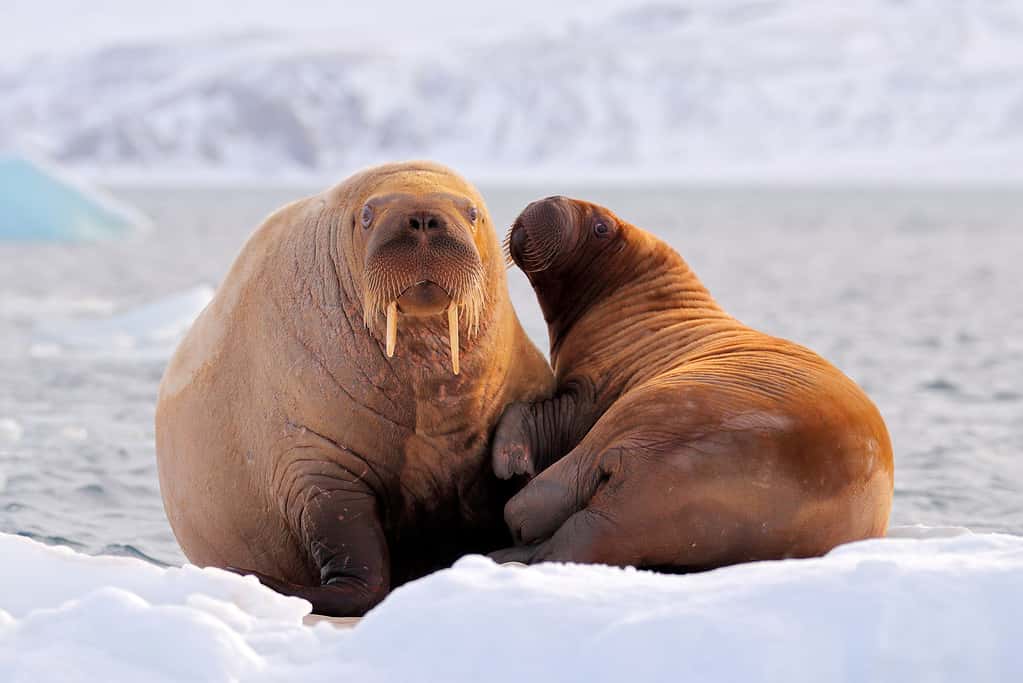
©Ondrej Prosicky/iStock via Getty Images
Bite force: 1850 PSI
Size: 9-12 feet long
Weight: 1,764-3,748 pounds
Although the walrus is the occasional prey of the polar bear, its bite force is no less impressive. In fact, the walrus has a higher bite force of 1,850 PSI. These carnivorous animals find almost all their prey on the ocean floor and use their thick mustaches to help them find their prey. The walrus’s main prey include clams, snails, squids, octopuses, and occasionally seals.
1. Orca (Orcinus orca)
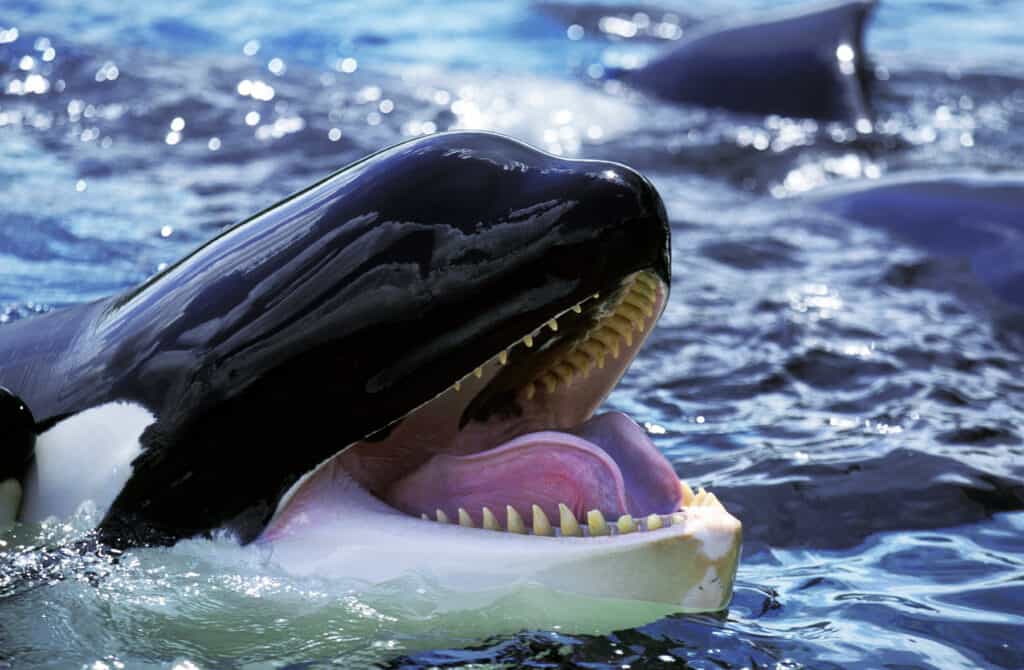
©slowmotiongli/Shutterstock.com
Bite force: 19,000 PSI
Size: 16-26 feet long
Weight: 6,000-15,000 pounds
The orca ranks number one on our list of strongest bite forces of animals in Canada. Weighing up to 15,000 pounds, it is no wonder this giant would have a giant bite force to match. The orca is a carnivorous animal that mainly feasts on fish, seals, squids, and sea birds. An adult orca can consume up to 300 pounds of food a day. They use their sharp, interlocking teeth to grab and tear into their prey with ease.
Summary of the 10 Strongest Bite Forces of Animals Found in Canada
| Rank | Animal | Bite Force (PSI) |
|---|---|---|
| 1 | Coyote | 88 |
| 2 | Beaver | 180 |
| 3 | Gray Wolf | 400 |
| 4 | Cougar | 400 |
| 5 | Canadian Lynx | 636 |
| 6 | Black Bear | 800 |
| 7 | Grizzly Bear | 974 |
| 8 | Polar Bear | 1,200 |
| 9 | Walrus | 1,850 |
| 10 | Orca | 19,000 |









